What is a Word Processor? (Definition & Meaning)
Search
Updated on:
A word processor is software or a device that allows users to create, edit, and print documents. It enables you to write text, store it electronically, display it on a screen, modify it by entering commands and characters from the keyboard, and print it.
Of all computer applications, word processing is the most common. Today, most word processors are delivered either as a cloud service or as software that users can install on a PC or mobile device.
Word Processor Checklist
Jump to a topic in this article:
- What is the History of Word Processing?
- What are Standard Features of Word Processors?
- Full-featured Word Processors
- Word Processors vs.
Text Editors vs. Desktop Publishing Systems
What is the History of Word Processing?
The earliest word processors were standalone machines similar to electric typewriters that debuted in the 1960s. The great advantage of these early machines over using a typewriter was that you could make changes without retyping the entire document. Over time, the devices acquired more advanced features, such as the ability to save documents on a disk, elaborate formatting options, and spell-checking.
While there are still some standalone word processors in use today, word processing began to move to personal computers in the 1980s. In the early days of the PC, a word processor called WordPerfect became one of the most widely used applications of any kind. Over time, however, What You See Is What You Get (WYSIWYG) word processors that showed users exactly what would print on their final documents became more popular. One of those WYSISWG word processors, Microsoft Word, became dominant in the 1990s.
Image: The first version of Microsoft Word was developed in 1981. The current version is Microsoft Word 16 (released in 2016).
With the advent of cloud computing in the 2000s, word processing changed again. The cloud allowed users to do their word processing via a browser-based application. While these cloud-based word processors lacked the advanced functionality of software installed on a device, they allowed users to store their documents in a remote data center and access them from any Internet-connected PC or mobile device. They also made it easier for geographically separated teams of people to work together on the same document. Many users found that cloud-based word processors offered enough features to meet their needs, as well as greater convenience, mobility, and collaboration support.
What are Standard Features of Word Processors?
Word processors vary considerably, but all word processors, whether cloud-based or installed on a system, support the following basic features:
insert text: Allows you to insert text anywhere in the document.
delete text: Allows you to erase characters, words, lines, or pages.
cut and paste: Allows you to remove (cut) a section of text from one place in a document and insert (paste) it somewhere else.
copy: Allows you to duplicate a section of text.
page size and margins: Allows you to define various page sizes and margins, and the word processor will automatically readjust the text so that it fits.
search and replace: Allows you to direct the word processor to search for a particular word or phrase. You can also direct the word processor to replace one group of characters with another everywhere that the first group appears.
word wrap: Automatically moves to the next line when you have filled one line with text, and it will readjust text if you change the margins.
print: Allows you to send a document to a printer to get hard copy.
file management: Provides file management capabilities that allow you to create, delete, move, and search for files.
font specifications: Allows you to change fonts within a document. For example, you can specify bold, italics, and underlining. Most word processors also let you change the font size and even the typeface.
windows: Allows you to edit two or more documents at the same time. Each document appears in a separate window. This is particularly valuable when working on a large project that consists of several different files.
spell checking: Identifies words that don’t appear in a standard dictionary.
Full-Featured Word Processors
Most installable modern word processor software supports additional features that enable you to manipulate and format documents in more sophisticated ways. Full-featured word processors usually support the following advanced features, and cloud-based word processors may have some of these features as well:
grammar checking: Identifies sentences, paragraphs, and punctuation that doesn’t appear to meet commonly recognized rules of grammar.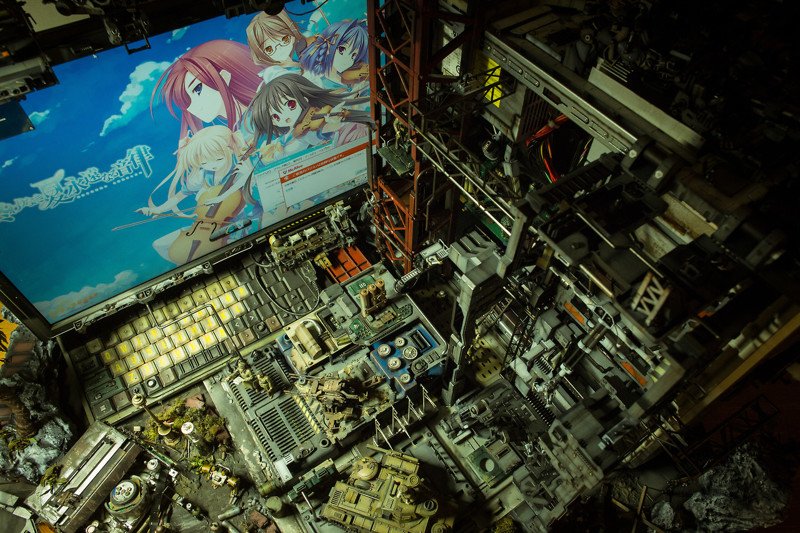
footnotes and cross-references: Automates the numbering and placement of footnotes and enables you to easily cross-reference other sections of the document.
automated lists: Automatically creates bulleted or numbered lists, including multi-level outlines.
graphics: Allows you to embed illustrations, graphs, and possibly even videos into a document. Some word processors let you create the illustrations within the word processor; others let you insert an illustration produced by a different program.
headers, footers, and page numbering: Allows you to specify customized headers and footers that the word processor will put at the top and bottom of every page. The word processor automatically keeps track of page numbers so that the correct number appears on each page.
layout: Allows you to specify different margins within a single document and to specify various methods for indenting paragraphs.
macros: Enables users to define and run macros, a character or word that represents a series of keystrokes. The keystrokes can represent text or commands. The ability to define macros allows you to save yourself a lot of time by replacing common combinations of keystrokes.
merge: Allows you to merge text from one file into another file. This is particularly useful for generating many files that have the same format but different data. Generating mailing labels is the classic example of using merges.
tables of contents and indexes: Allows you to automatically create a table of contents and index based on special codes that you insert in the document.
thesaurus: Allows you to search for synonyms without leaving the word processor.
collaboration: Allows users to track changes to the document when more than one person is editing. Some cloud-based word processors also allow multiple users to edit the same document at the same time.
internet features: Allows users to embed Web links into their documents and format their documents for the Web. Some also link to Web services that can help users create their documents.
translation and speech: As artificial intelligence capabilities become more commonplace, some word processors have gained the ability to read text aloud, to accept voice commands, and to translate text from one language to another.
Read also: What is a Spreadsheet?
Word Processors vs. Text Editors vs. Desktop Publishing Systems
Word processors are very similar to two other categories of software: text editors and desktop publishing applications. An example of a word processor is offered by Zoho.
Applications that support only the basic features from the first list above (and maybe a few others) are sometimes called text editors. Office workers sometimes use text editors to create simple documents that don’t require a full-featured word processor. However, text editors are more commonly used by programmers who use special text editors with features designed for writing code.
Desktop publishing systems, on the other hand, are generally more advanced and complex than word processors. The line dividing word processors from desktop publishing systems is constantly shifting as word processors become more advanced. In general, though, desktop publishing applications support finer control over layout, especially for documents with a lot of graphics, and they offer more support for full-color printing options.
This article was updated April 2021 by Jenna Phipps
Related Articles
Related Articles
Best free word processor of 2023
Skip to main content
When you purchase through links on our site, we may earn an affiliate commission. Here’s how it works.
(Image credit: Burst / Pexels)
The best free word processor makes it simple and easy way to create digital documents, without having to buy a software license.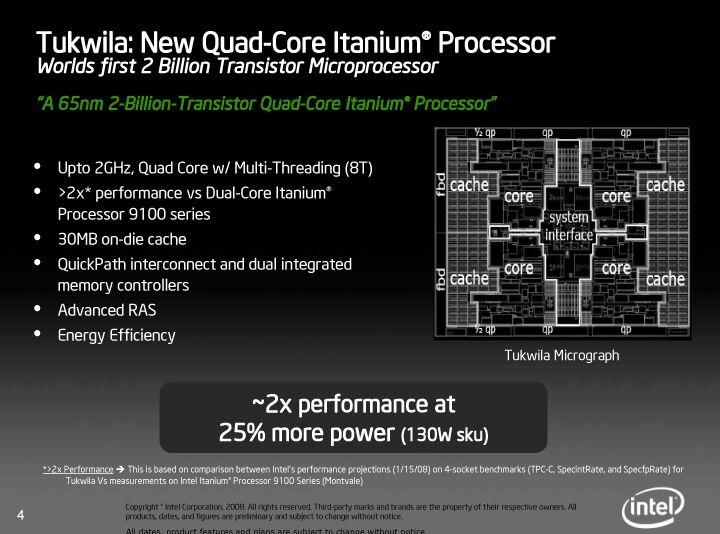
You might be able to manage without a spreadsheet tool or something for making slideshows, but text documents are unavoidable. However, while there are some good, free word processing programs out there, they tend to not have so many features as paid-for software.
Even when they do, there can be compatibility issues with moving document formats between software platforms, especially when importing to Microsoft Word .
Here we’re looking at the very best word processors that can be used offline (particularly useful for distraction-free writing), but there are also several excellent browser-based tools to consider if you’d rather do your writing online.
These then are the best free word processors and alternatives to Microsoft Word, that will provide a reliable platform for you to work from, at home or in the office.
We’ve also featured the best Microsoft Office alternatives.
The best word processor available today is: Microsoft Word
For sheer features and convenience it’s still hard to beat Microsoft Word.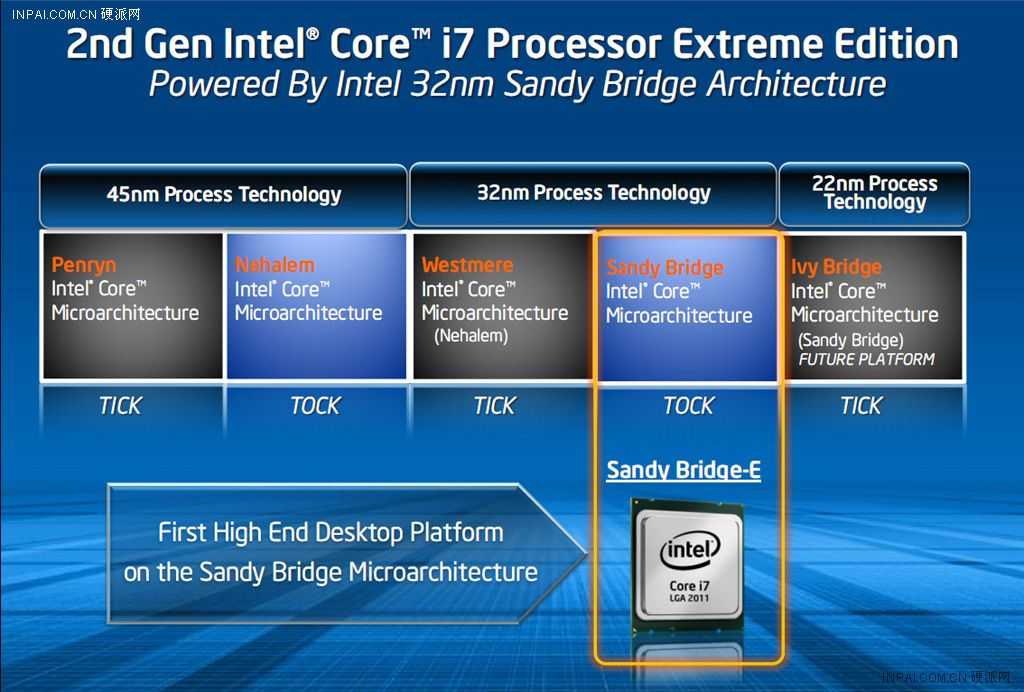 While it’s not free like the tools listed below, the latest version fully integrates with Microsoft OneDrive, and lets you shift material seamlessly between the whole suite of Microsoft 365 apps.
While it’s not free like the tools listed below, the latest version fully integrates with Microsoft OneDrive, and lets you shift material seamlessly between the whole suite of Microsoft 365 apps.
Why you can trust TechRadar
Our expert reviewers spend hours testing and comparing products and services so you can choose the best for you. Find out more about how we test.
(Image credit: LibreOffice)
1. LibreOffice Writer
All-singing, all-dancing word processors for any text-based work
Specifications
Operating system: Windows, macOS, Linux
Today’s Best Deals
Reasons to buy
+
Excellent format compatibility
+
Document template galleries
+
Support for plugins
+
No ads or paywalls
LibreOffice is a fork of Apache OpenOffice, and the two offer very similar word processing apps, but LibreOffice receives more frequent updates and has a more lively userbase, so we’re inclined to lean in its favor.
The word processor, Writer, is a feature-packed analog of Microsoft Word, packed with all the tools you could need for any text-based work.
The two versions of Writer include wizards and templates for common document types, such as invoices and letters, and it’s easy to create your own templates for future use as well. The word processors also work together with the other office software in their respective suites – so you can use Base to create a bibliography, for example.
Both word processors support all the most popular file formats, and can export documents to PDF without the need for additional software. If you’re looking for a word processor that can stand in for Microsoft Word, either of these two will be a perfect candidate.
Read our full LibreOffice review.
(Image credit: WPS Office)
2. WPS Office Free Writer
A word processor with cloud storage and support for all text files
Specifications
Operating system: Windows, macOS, Linux
Today’s Best Deals
WPS Office Free
Visit Site at KINGSOFT Office Software
Reasons to buy
+
Interface almost identical to Word
+
Excellent file format support
+
Free cloud storage
Reasons to avoid
—
Contains some ads
If you’ve used a modern version of Microsoft Word, there’ll be no learning curve when you switch to Writer – the word processing component of WPS Office Free.
This free word processor looks and behaves almost exactly like its premium counterpart, and even has its own equivalent of OneDrive, offering 1GB free cloud storage.
Its selection of pre-installed templates gives you everything you need for common document types, and you can easily create your own for bespoke tasks. It’s compatible with every text file format you can think of, including current and legacy versions of Microsoft Word dating back to Office 97.
WPS Office Writer is supported by discrete ads, which can be removed by upgrading to the premium version, but they’re barely noticeable and no features are locked behind a paywall. Overall, WPS Writer is very impressive, and in our opinion it’s the best free word processor available to download today.
WPS recently launched a free PDF to Word converter as well, which is a great companion to its word processor.
Read our full WPS Office Free review.
(Image credit: FocusWriter)
3.
 FocusWriter
FocusWriter
The ideal word processor for first drafts, with no fussy formatting
Specifications
Operating system: Windows, macOS, Linux
Today’s Best Deals
Reasons to buy
+
Blocks out distractions
+
Timers and alarms
+
Auto-save function
Reasons to avoid
—
Not ideal for editing
If you simply want to hammer out some words without worrying about formatting, you could just use Windows’ built-in Notepad app, but FocusWriter is full of clever tools that will help you maximize productivity without ever getting in the way.
As the name implies, FocusWriter blocks out all distractions so you can give that all-important first draft your full attention. In normal use, all you see is a blank page – toolbars are only visible if you move your mouse pointer to the edge of the screen – but there’s a killer feature in Focused Text, which fades everything into the background except the current paragraph or sentence.
FocusWriter also features alerts that are triggered at certain times, or when you’ve reached a predefined word count, so you don’t need to worry about watching a counter (as you would in Microsoft Word). This also makes FocusWriter a good tool to use in tandem with the Pomodoro Technique, which involves working hard for a period of time that’s long enough for you to work productively, but not so long that you become fatigued.
It’s not great for editing, but for productivity, FocusWriter is hard to beat.
Read our full FocusWriter review.
(Image credit: FreeOffice)
4. FreeOffice TextMaker
Another great looking word processor, but watch your file formats
Specifications
Operating system: Windows, Mac, Linux
Today’s Best Deals
Reasons to buy
+
Can export to EPUB format
+
Prints multiple pages per sheet
+
Opens password-protected files
Reasons to avoid
—
Doesn’t support DOCX files
TextMaker – the word processing element of SoftMaker FreeOffice – is good looking, and comes with several handy templates for creating letters and other everyday documents. The selection isn’t as extensive as some of its rivals’, but you can also make new designs for future use and save them in TMV format.
The selection isn’t as extensive as some of its rivals’, but you can also make new designs for future use and save them in TMV format.
All the features you’d expect from a modern word processor are present and correct, including advanced formatting options, the ability to create databases for managing bibliographies and footnotes, and a function for tracking changes to collaborative projects.
The only real drawback of TextMaker is its inability to save your work in DOCX format (though you can open and edit these files with no difficulty). This feature is limited to the premium version of SoftMaker Office.
Read our full FreeOffice review.
(Image credit: Writemonkey)
5. Writemonkey
Productivity-focused word processing with quick shortcuts
Specifications
Operating system: Windows
Today’s Best Deals
Reasons to buy
+
Distraction-free interface
+
Supports markup
+
Handy keyboard shortcuts
Reasons to avoid
—
Only works with TXT files
WriteMonkey is another no-frills word processor designed to help you maximize your output without fussing with editing and formatting. It’s not intended for documents like letters or CVs, but is great for committing early ideas to paper (or screen) so you have the raw material to develop later.
It’s not intended for documents like letters or CVs, but is great for committing early ideas to paper (or screen) so you have the raw material to develop later.
Unlike FocusWriter, which is compatible with all the most common text formats (including Microsoft’s DOC and DOCX), WriteMonkey only works with TXT files, so you’ll have to convert any works in progress before opening them. WriteMonkey’s hidden controls are trickier to navigate, too – everything is accessed via a large right-click menu, or a vast collection of keyboard shortcuts.
That said, if you’re happy to commit those shortcuts to memory, you’ll find WriteMonkey faster to use than toolbar-based alternatives.
We also like the ability to look words up in Wikipedia, Google Images, Poetry.com, Answers.com, and many others without opening a browser winder manually and leaving yourself open to the temptations of Twitter and Facebook.
WriteMonkey is a portable app, so there’s no need to install it – just extract all the downloaded files to a removable drive or cloud storage service and fire it up by running the file WriteMonkey.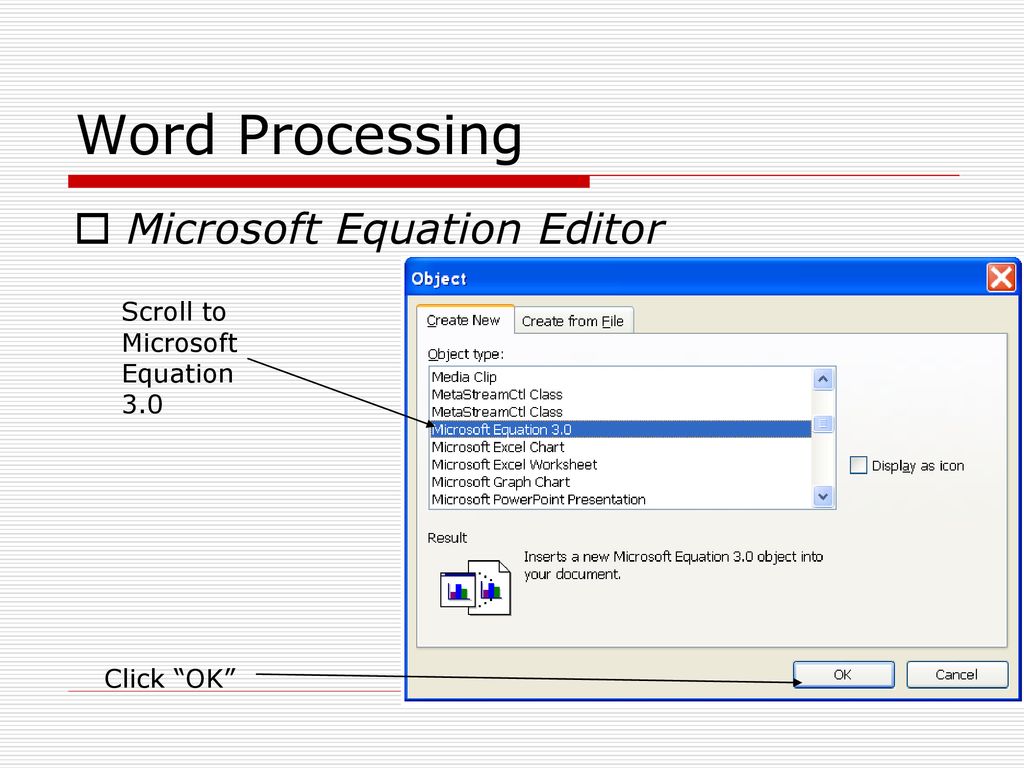 exe.
exe.
Read our full Writemonkey review.
(Image credit: Google)
6. Google Docs
Free online word processing with sharing and collaboration features
Today’s Best Deals
Reasons to buy
+
Convenient sharing and editing through Google Drive
+
Excellent support options
+
15 GB of free storage
Reasons to avoid
—
Mobile app lacks a few features
—
Formatting issues
—
Not as good as Microsoft Word
When it comes to free word processing, Google Docs may seem like one of the most obvious choices, and has the advantage of saving your work automatically so you don’t have to worry if your connection fails.
It’s also a good choice for collaborative working, and means you don’t have to upload work to a separate cloud storage service.
However, it has a limited selection of templates, there’s no way to import content from other Google applications, it suffers from the formatting issues when importing mentioned above, and any online tool is going to be surrounded by distractions like social media.
Read our full Google Docs review.
We’ve also featured the best free cloud apps for business.
Which free word processor is best for you?
When deciding which free word processor to download and use, first consider what your actual needs are, as sometimes free platforms may only provide basic options. That means if you need to use advanced tools you may find a paid platform is much more worthwhile. Additionally, free and budget software options can sometimes prove limited when it comes to the variety of tools available, while higher-end software can really cater for every need, so do ensure you have a good idea of which features you think you may require.
How we tested the best free word processor
To test for the best free word processor we first set up an account with the relevant software platform, whether as a download or as an online service.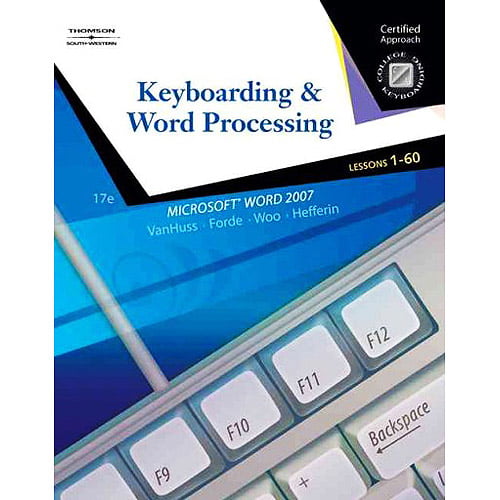 We then tested the service to see how the software could be used for different purposes and in different situations, especially looking at how it worked with different file formats. The aim was to push each software platform to see how useful its basic tools were and also how easy it was to get to grips with any more advanced tools.
We then tested the service to see how the software could be used for different purposes and in different situations, especially looking at how it worked with different file formats. The aim was to push each software platform to see how useful its basic tools were and also how easy it was to get to grips with any more advanced tools.
Read how we test, rate, and review products on TechRadar.
Round up of today’s best deals
WPS Office Free
View
Sign up to theTechRadar Pro newsletter to get all the top news, opinion, features and guidance your business needs to succeed!
Contact me with news and offers from other Future brandsReceive email from us on behalf of our trusted partners or sponsors
Cat is the editor of TechRadar’s sister site Advnture. She’s a UK Athletics qualified run leader, and in her spare time enjoys nothing more than lacing up her shoes and hitting the roads and trails (the muddier, the better)
TechRadar is part of Future US Inc, an international media group and leading digital publisher.![]() Visit our corporate site .
Visit our corporate site .
©
Future US, Inc. Full 7th Floor, 130 West 42nd Street,
New York,
NY 10036.
Asus breaks world record by overclocking Core i9-13900K to 9GHz
It is reported that the Z790 Apex motherboard has been upgraded, the developers improved the VRM for this attempt.
Before the release of the new Intel Raptor Lake processors, many were impressed that the overclocker was able to overclock the Core i9-13900K to 6.2 GHz with liquid cooling. Now, that level of performance has been beaten by the Asus overclocking team. Overclockers have successfully overclocked 13900K to 9 GHz, breaking the world record for CPU clock speed. This is the first time that a processor has been able to break the 9 GHz barrier. The same team had overclocked the same chip to 8.81 GHz earlier in October, beating an AMD processor. It held the crown for over eight years thanks to an overclock to 8.7GHz on an AMD FX-8370 back in 2014.
The key to the team’s success this time was the use of liquid helium instead of liquid nitrogen. Apparently, helium can get much colder than LN2, but it evaporates almost instantly, making it harder to use. To reach frequency 9GHz, the team had to lower the CPU socket temperature to -250°C. A blowtorch was used around the motherboard to keep it warm and prevent condensation from forming during operation. The team’s platform was the Asus ROG Maximus Z790 Apex, which sells for around $800. Asus announced their record on their Twitter page and also posted a video, which you can watch below.
Apparently, helium can get much colder than LN2, but it evaporates almost instantly, making it harder to use. To reach frequency 9GHz, the team had to lower the CPU socket temperature to -250°C. A blowtorch was used around the motherboard to keep it warm and prevent condensation from forming during operation. The team’s platform was the Asus ROG Maximus Z790 Apex, which sells for around $800. Asus announced their record on their Twitter page and also posted a video, which you can watch below.
There is some confusion as to which chip was used to set the record. Although in CPU-Z it is clearly labeled as Core i9-13900K, Intel also posted a video showing the Core i9-13900KS chip. Intel has yet to announce the 13900KS, which is an improved 13900K that can push the single core clock up to 6GHz. This is 200 MHz higher than the existing 13900KS. This seems to imply that this is the chip that Intel tentatively chose to turn into the 13900KS at some point due to its overclocking capabilities. This is the so-called «golden sample» of the processor. Obviously Intel is now giving away these chips to overclockers, hence this world record. nine0003
This is the so-called «golden sample» of the processor. Obviously Intel is now giving away these chips to overclockers, hence this world record. nine0003
Intel did not notice this in their video, or is this a deliberate leak? (Image: Intel/YouTube)
The overclocker responsible for this world record is Elmore, who is the leader of the Asus overclocking team and his assistant named Scatterbencher. Videocardz also revealed that the Z790 Apex they were using was upgraded with an improved VRM for this attempt. The CPU frequency has already been fixed in HWBot, making it the official new world record. nine0003
recommendations
It is worth noting that this frequency was achieved on one core, and not on all cores. The 13900K has eight high performance and 16 energy efficient cores. Efficiency cores were disabled during the overclocking experiment. Asus claims that the Z790 Apex has set 14 world records so far, which seems to justify its very high price.
This material was written by a site visitor and has been rewarded.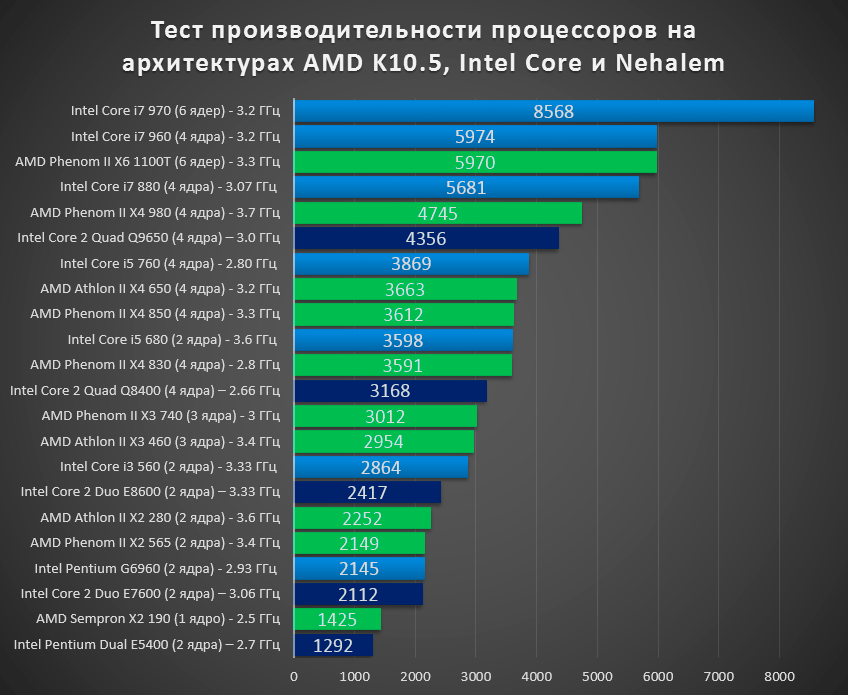
What microprocessors are being developed in Russia? And what will happen to them because of the sanctions? nine0001
TSMC’s Taiwan factory is no longer available to Russian microprocessor developers. For a number of possibilities, this production has no alternatives in the world. What will the companies do and what are their prospects?
Taiwanese company TSMC is a leader in the production of the most advanced chips. Among her clients are Apple, Qualcomm, Nvidia. Last year, it accounted for 54% of the world market for their production. In February, TSMC stopped production of Baikal, Elbrus processors and other Russian-designed chips. We talked with experts about the present and future of domestic microprocessors. nine0003
There are five main developers of microprocessors in Russia: MCST, Baikal, Modul, Elvis and Milander. «Of these, Milandra has the largest production volumes and nomenclature. The products of the companies intersect in areas of application, but each can be identified as the main direction,» says Ivan Pokrovsky, executive director of the Association of Electronics Developers and Manufacturers.
- «Milandr» — microcontrollers of the Internet of things. For example, for meters, industrial automation. nine0039
- MCST (Elbrus processors) — central processors of servers, data storage systems, supercomputers, for heavy computing systems in industrial automation.
- «Baikal» — central processors of personal devices. Processors «Baikal» series M — for personal and industrial computers, T — network telecom equipment, the new processor S — for servers.
- «Elvis» — network processors for telecom.
- «Module» — digital, graphic and neuroprocessors. nine0039
For example, the Elbrus and Baikal processors are important for creating a critical information infrastructure (CII) in Russia — they are designed for workstations and servers of large companies and government agencies.
Critical information infrastructure is a set of IT systems that are critical for the operation of the main areas of society and the state, such as healthcare, transport, communications, energy, defense industry, etc.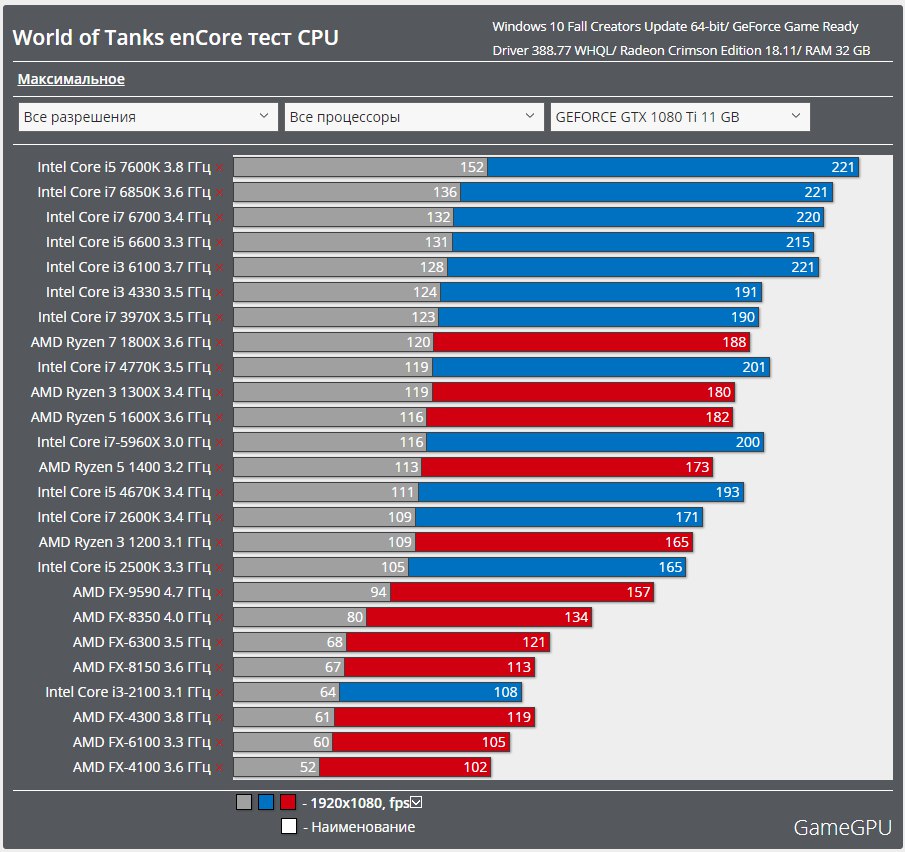 For several years, Russia has been preparing the transition of CII facilities to software and equipment of domestic developers. nine0003
For several years, Russia has been preparing the transition of CII facilities to software and equipment of domestic developers. nine0003
Today, the critical information infrastructure is dominated by equipment and software from foreign manufacturers. «In personal computers and servers — solutions based on Intel and AMD. IBM has a large share in data storage systems. In Internet of Things equipment — from STMicroelectronics. In video processing systems, artificial intelligence — Nvidia,» Ivan Pokrovsky lists.
«All high-performance Russian-designed microprocessors were produced at TSMC,» says Ivan Pokrovsky. nine0003
Russian processor developers are mostly so-called fabless companies, those that do not have their own factories. This means that they develop the architecture and design of the processor, but for the release of the silicon chip itself as the final product, they enter into contracts with the factory. This is a common practice, many of the most notable developers in the world work in contract manufacturing.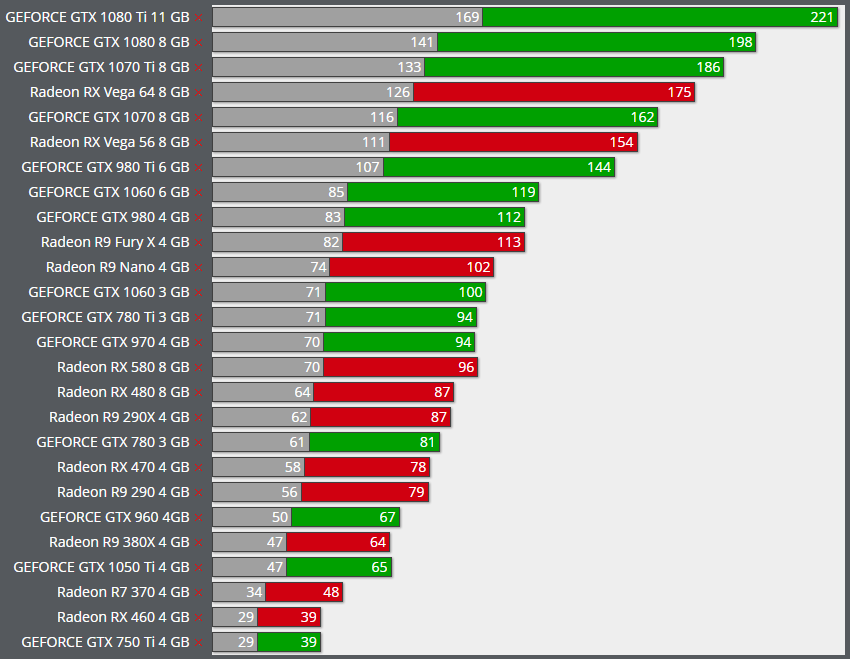 For example MediaTek.
For example MediaTek.
«In 2005–2013, the first series of Elbrus chips for technical processes 130–90 nm (nanometers) was produced in small batches at the Mikron plant in Zelenograd. Then the first problems appeared. The second generation of Elbrus-2SM processors did not show good performance according to 90 nm standards, there was a lot of marriage. The plant’s general-purpose process itself was not tuned to the Elbrus processors, which brought down local production. The third generation and subsequent generations of MCST processors were produced abroad, mainly at TSMC factories,» says Alexey Petrov, entrepreneur, chip design specialist.
The MCST also created an adapted version of Elbrus-4SM/65 nm for production at the Mikron facility. «But the enterprise was unable to switch to the technical process necessary for this — 65 nm and achieve an acceptable quality,» Petrov specifies.
There are more than 400 factory lines in the world for the production of various chips.
But the production of high-performance microprocessors for small technical processes — 16-10 nm and less — is no more than a dozen. The smaller the nanometer, the higher the performance and speed of the chip: a 5nm chip is faster and more productive than a 10nm one. The first has a much more complicated design, more complicated and more expensive to manufacture. nine0003
«The transistor in a 10 nm processor is only 50 helium atoms in size. To understand the scale: the size of a human hair is about 80-110 microns — a chip with about 1.2 million transistors can easily fit on its cut. To create such a micro miracle, extremely complex TSMC Taiwan Factory is the world leader in advanced technology for 90nm, 65nm, 45nm, 40nm, 28nm, 20nm, 16/12nm, 10nm, 7nm, 5nm ICs, and now has more than 30 manufacturing lines in Taiwan, two in the U.S. and two in China. For such a large production, the plant has an entire logistics network for suppliers of various components for the production of chips. The production of small chips is an extremely complex process that requires very complex technologies, unique machines and an incredibly complex infrastructure. and it is extremely unrealistic to support such a plant, say, for technological standards of 10 nm, with the resources of one country, this requires resources, unique machines and rare engineering achievements of many different wounds,» says Alexei Petrov. nine0003
Only two companies in the world, TSMC and Samsung, can produce 5nm chips today. On the 10nm process technology — Intel, TSMC, Samsung. GlobalFoundries was going to launch its own production of 10-nanometer chips, but refused, having encountered difficulties. And for the release of 14-nanometer, she shared part of the developments with Samsung in order to jointly create production. Meanwhile, TSMC has begun experimental production of 3nm chips and is about to launch a 2nm processor factory. nine0003
«Intel, comparable in technical level to TSMC, does not fulfill contract manufacturing orders, only produces its own products. And Samsung specializes in memory chips, does not have the IP block libraries necessary for the production of microprocessors. In fact, in the contract manufacturing of high-performance microprocessors, TSMC does not have alternatives in the world,” explains Ivan Pokrovsky.
This takes about two or three years. In rare cases, with ready-made developments and well-established connections, it is faster. nine0003
Development has been going on for one and a half to two years.
«Developers and chip designers create an architectural sketch of the processor based on customer requirements. Engineers design the electrical architecture, the design of the chip adapts to the specific technical process of the particular plant where it will be produced. Transfer it to another plant, even working on similar technical standards, it is often impossible without a redesign,» says Alexey Petrov.
It takes another year and a half from growing a silicon billet to the final — a finished microprocessor, the plant for small technical processes has its own turn, and it will not be possible to produce earlier if desired. nine0003
«Production goes through more than 500 high-tech stages,» Alexey Petrov continues. «On a large silicon wafer — a wafer — conductors, transistors and many layers are formed using lithography, doping and diffusion — up to 13-15 layers for modern chips. So many chips are gradually formed on one large wafer. The wafer is cut into separate chip-crystals, conductors are attached to them, and they are mounted in a case. Further, as a rule, the chips are tested again and pass the output control, only then it turns into a relatively final product in the form of a familiar processor in a package. nine0003
Today in Russia there are no factories for the production of processors according to the standards of less than 65 nm. And TSMC carried out the production of chips of this nanometer for MCST. In addition, MCST has developed a 16 nm chip.
Last week, RBC reported, citing a source, that the MCST company, which develops Elbrus processors, is negotiating with the Mikron factory in Zelenograd to transfer production to their facilities. At the request of TASS, the MCST replied that they are not giving official comments now. The letter to the press service of Mikron was not answered at the time of publication of this text. nine0003
In addition to «Mikron» in Zelenograd there is a production facility of «NM-Tech». The company has begun building a factory to produce 28nm processors. Previously, NM-Tech brought specialists from Taiwan to Russia to work in its production.
Due to sanctions, the manufacturer of Baikal processors, JSC Baikal Electronics, has lost the opportunity to use the externally patented architecture of the British company ARM. ARM is a processor designer that licenses already developed architectures and helps manufacturers adapt solutions. nine0003
«For the processor, you need to create a number of software products, compilers, libraries of standard functions, documentation and support. Without this, the processor will be a useless silicon brick. Using compatibility with the ARM architecture, it is many times easier to use all the developments that already exist in the world. Now for developers «Baikal» chips are not available for new licenses. Released and already operating processors will not be affected by this, the old issued licenses are not revoked. To release new ones, you will have to look for or create your own architecture, «explains Alexey Petrov. nine0003
«Now for such production — factories with production standards for 28 nm processors, unfortunately, there is nothing — neither technological equipment, nor materials, nor process engineers with relevant competencies. Of this, the most important is the school of process engineers. In the foreseeable future high-performance microprocessors can only be produced at foreign factories.The challenge is to overcome sanctions restrictions and dependence on one company, obtain alternative options and increase the stability of international cooperation chains.Russian factories need to produce medium-performance microcircuits for tasks that are not so demanding on speed, as to the level of security,» Ivan Pokrovsky believes.
